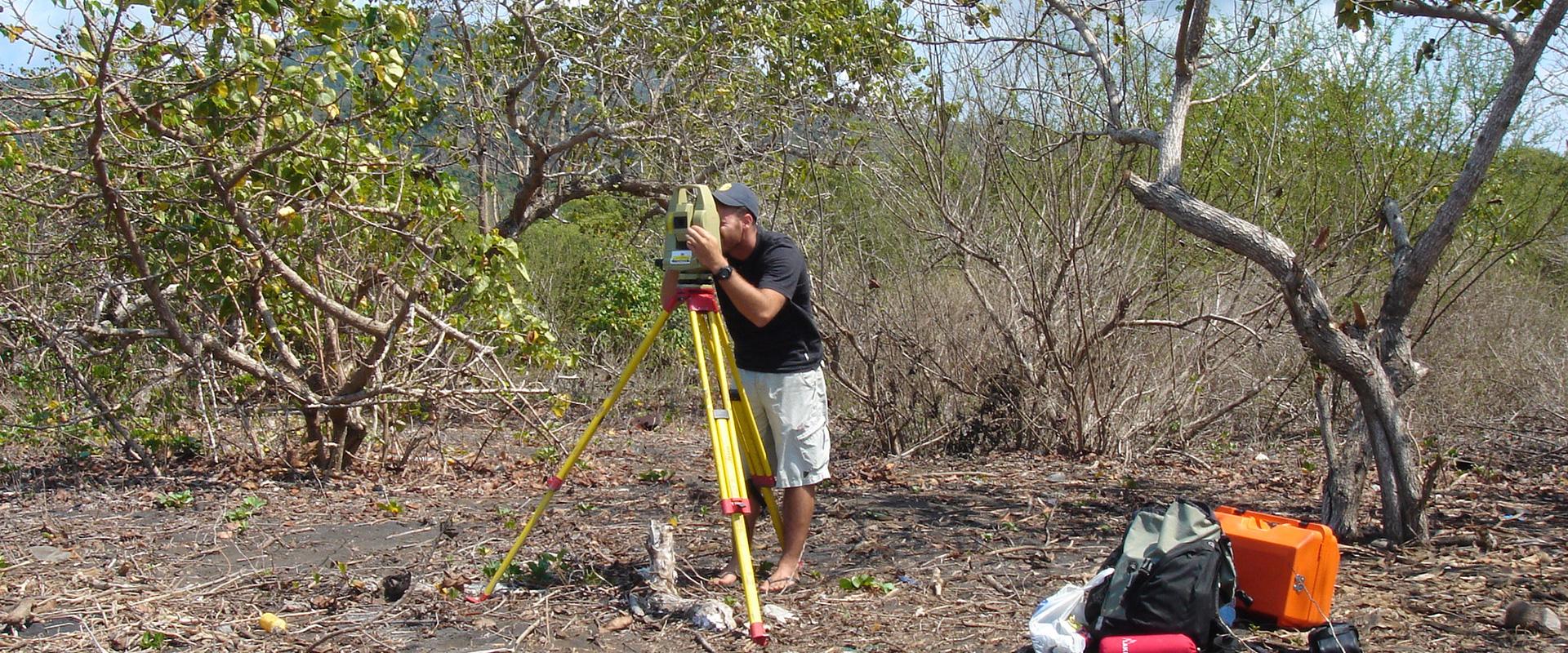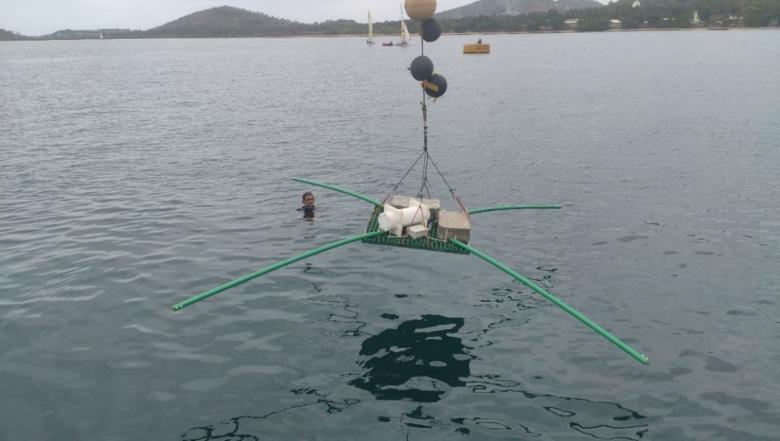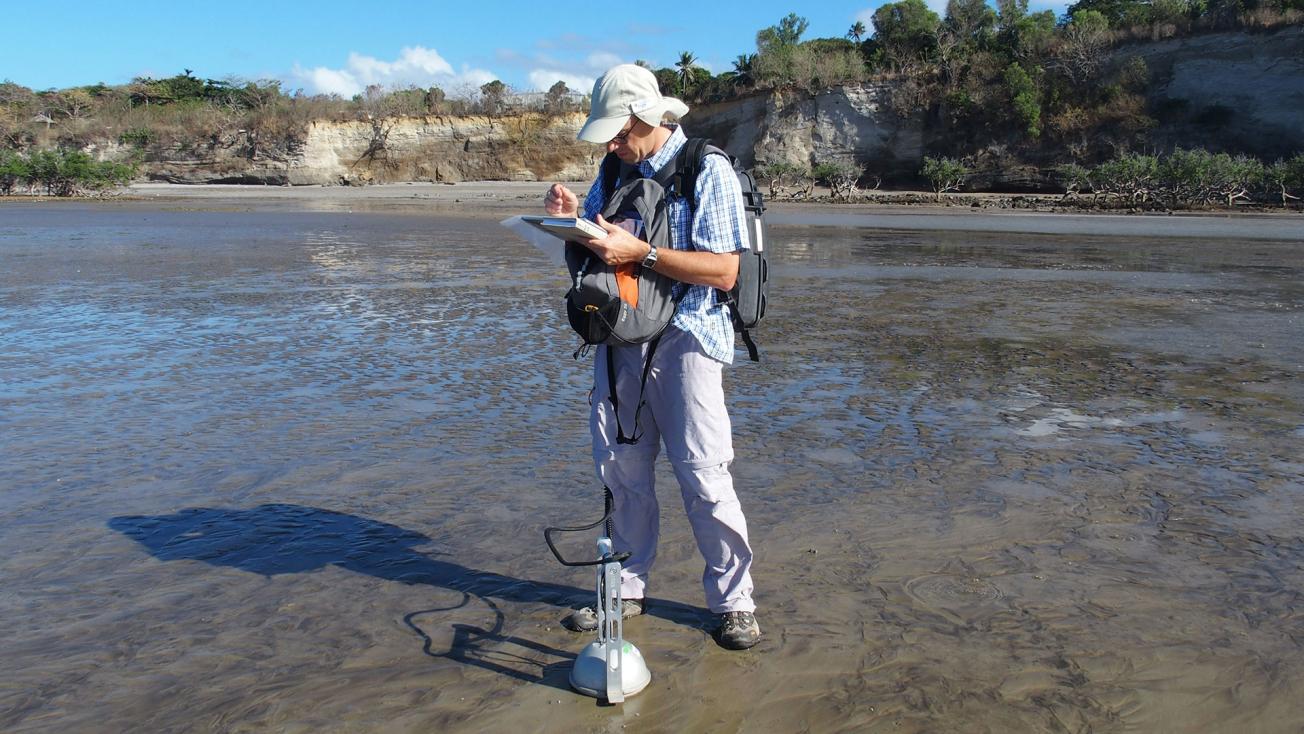
Measurement of CO2 emanating from the airport beach (Pamandzi, 2021)
© BRGM - C. Dezayes
The need
In 2017 the electricity mix of the Mayotte département was made up of photovoltaic production to the extent of 5%, spread over more than 70 facilities on the island, and 95% diesel thermal production, provided by the two plants operated by Electricité de Mayotte (2017 data). In order to diversify its sources of electricity, the Mayotte Departmental Authority has since 2005 been implementing a large-scale programme to develop renewable energies, which includes evaluating Mayotte's geothermal potential.
As part of this programme, the geothermal exploration study carried out by BRGM in Mayotte between 2005 and 2008 identified the Petite Terre zone as the area with indications of a potential deep (> 1,000 m), high-temperature (> 200°C), active geothermal resource that could be used to produce electricity. Following this initial study, it was deemed necessary to undertake a deep exploration programme, which included the drilling of boreholes, in order to confirm the existence of a geothermal zone of interest and to locate it precisely.
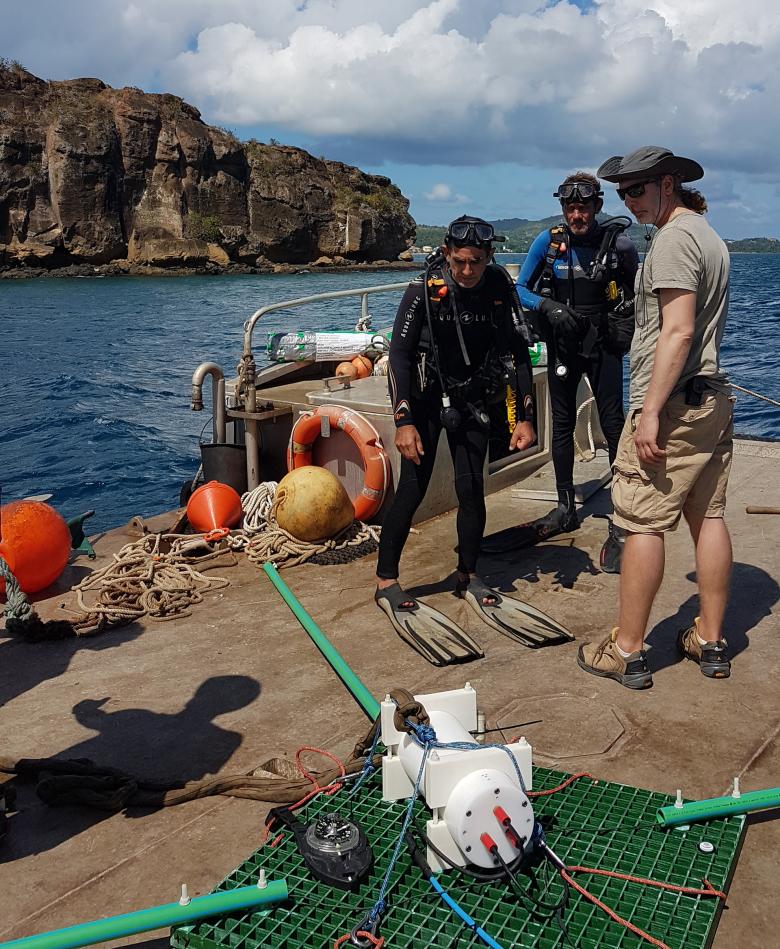
Electromagnetic geophysical measurements at Petite Terre (Mayotte) in 2019 offshore.
© Pascal Tarits, Université de Brest Occidentale/IMAGIR/MAPPEM
Results of Phase 1 (2018-2019)
Given the cost and complexity of such a programme, BRGM carried out a preliminary stage to define and size the exploratory campaign as well as possible, given the objectives and uncertainties specific to Petite Terre. The first phase of this preliminary stage was carried out by BRGM with the support of ADEME Mayotte from June 2018 to December 2019.
The new geoscientific data (including geophysical data) collected for the project confirmed the strong deep geothermal potential at Petite Terre, as well as the need to drill several deep exploratory boreholes (up to 2,000 m deep) in order to:
- characterise the geological formations;
- identify the different sources of incoming water, their temperature and their physical and chemical characteristics;
- determine the permeability of the reservoir;
- estimate the latter's capacity to generate electricity.
Results of Phase 2 (2021-2022)
The geological, geochemical and geophysical data acquired during the project suggested the likely presence of a geothermal reservoir and were used to establish a new conceptual model of the circulation of deep, hot fluids. The top of this reservoir is thought to be around 1,000 to 1,500 metres deep and its temperature is estimated to be around 250°C, or even higher, based on the results provided by gas geothermometers. The NW-SE direction has been identified as a preferential direction for fluid drainage, probably via transtension fault zones. These data were used to build a 3D geological model, which served as the basis for hydrothermal simulations. The data were also fully incorporated and analysed in a GIS to validate the new method. These models are robust tools for defining areas of geothermal interest. Despite the uncertainties, which have not yet been quantified and which should not be overlooked for the future, it is already clear that the models are converging on three priority areas:
- the area between Lake Dziani and the Moya maars;
- the airport beach;
- the centre of the island.
To confirm the existence of this resource, a programme of three 1,500 metre-deep boreholes has been defined, at a cost of between €14m and €19m. This drilling campaign will acquire knowledge that is not accessible through surface investigations, but which is nonetheless essential for a successful geothermal operation.
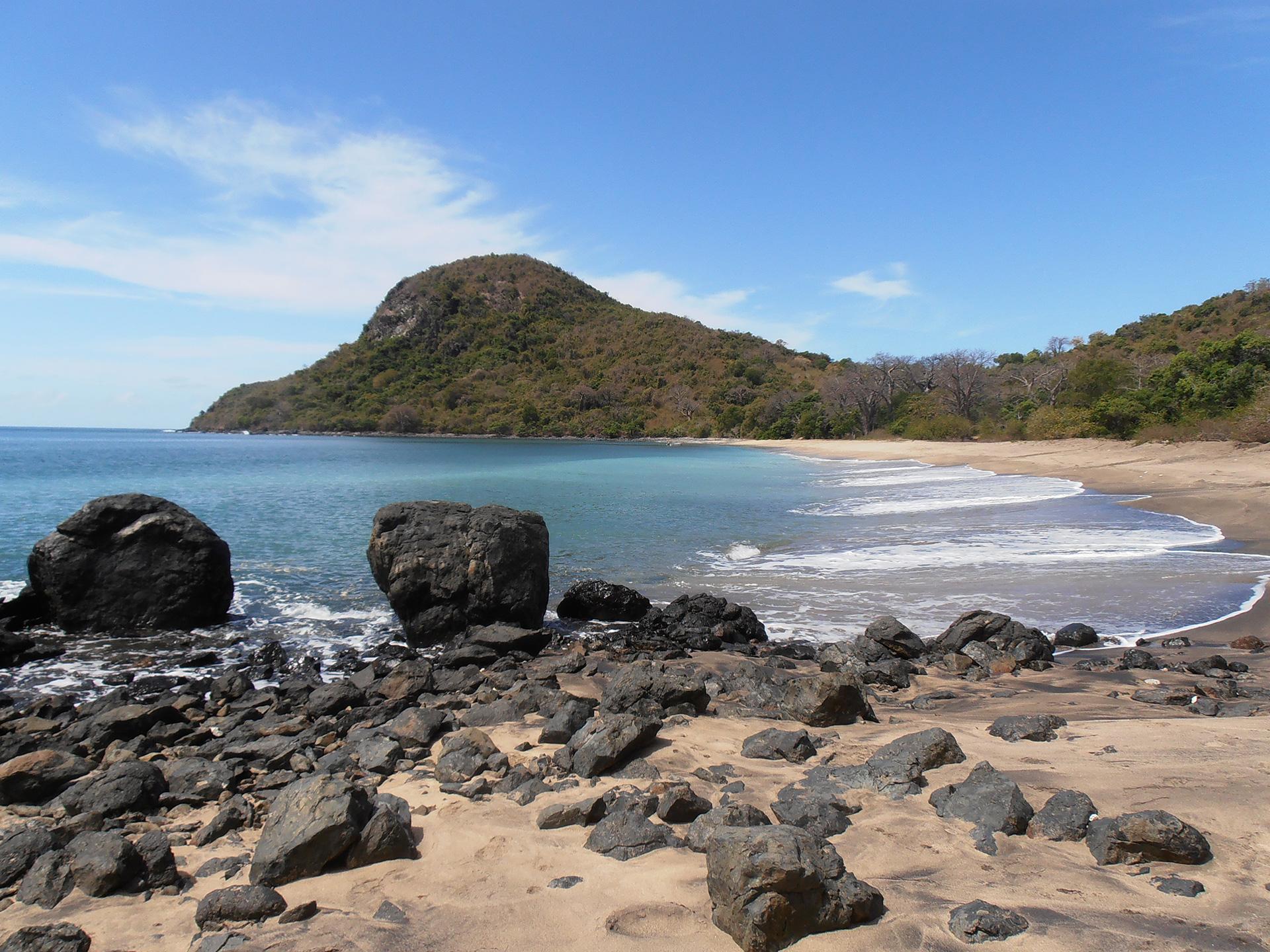
Geothermal energy is a controllable renewable energy and a viable solution for meeting our need for energy autonomy. Thanks to BRGM’s contribution, the study confirmed the existence of deep geothermal potential on Petite Terre. These results now need to be refined through a more in-depth exploratory phase. It will confirm the possibility of exploiting a geothermal resource to produce electricity and thus increase the proportion of renewable energy in Mayotte's energy mix.
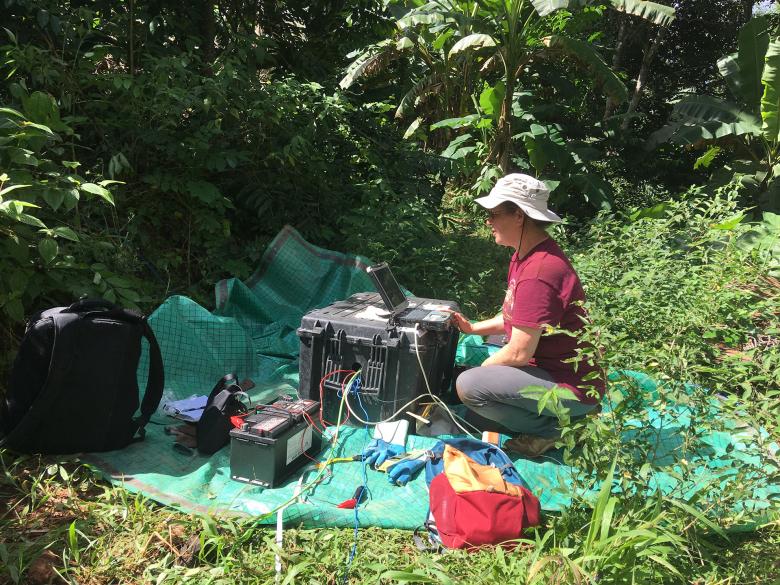
Electromagnetic geophysical measurements at Petite Terre (Mayotte) in 2019 onshore
© Pascal Tarits, Université de Brest Occidentale/IMAGIR/MAPPEM
Using the results
At the end of this second phase of the study, one or more exploratory boreholes could be drilled to confirm the existence of a geothermal resource and to quantitatively estimate its potential.
This information will be one of the key elements needed before moving on to the next phase, the exploitation of Petite Terre's geothermal resource to produce electricity, and thus, potentially, significantly increase the proportion of renewable energy to several tens of percent of Mayotte's energy mix.
The partners
- Mayotte Departmental Council
- ADEME Mayotte
- French Development Agency

